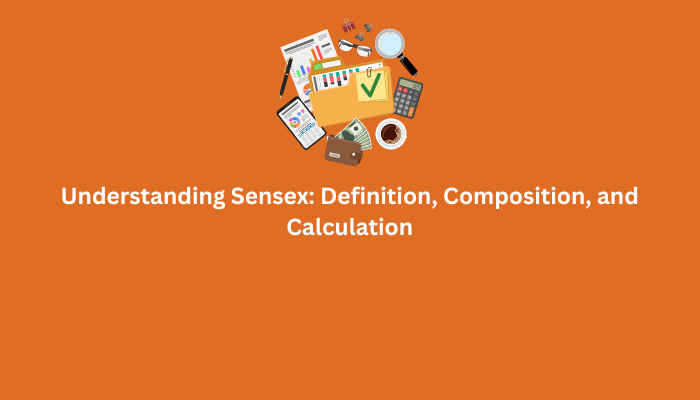What is Sensex?
Sensex, a portmanteau of “Sensitive” and “Index,” was coined by Deepak Mohoni, a stock market expert.
It represents the most popular market index of 30 companies listed under the Bombay Stock Exchange (BSE). These component companies are among the largest and most actively traded stocks in India.
Criteria for Inclusion
The selection of companies under the Sensex is governed by the S&P BSE Index Committee, which adheres to specific criteria:
- Listing on the Bombay Stock Exchange in India.
- Large or mega-cap stocks.
- Liquidity of the stocks.
- Earnings generated from core activities.
- Contribution to maintaining sector balance in the country’s equity market.
Evolution of Sensex
Since its inception in the early 1990s, Sensex has witnessed remarkable growth, particularly post-2000. Various milestones mark its journey, reflecting the dynamic nature of India’s economic landscape.
Milestones
Early 90’s to the end of the 20th century
- July 1990: Sensex closed at 1001, touching 1000 for the first time.
- 1991-1992: Introduction of liberal economic policies led to crossing the 2000 mark.
- 1999: Crossed 5000 points, marking the onset of the new century.
Beginning of the 21st century to mid-2000s
- IT boom propelled the index beyond 6000 points.
- Settlement in the Ambani family spurred growth, crossing 7000 points.
- Rapid expansion from 9000 to 10,000 points between June and December 2005.
Mid-2000s to its end
- Touched 10,003 points in February 2006.
- Rapid growth to 20,000 points by December 2007.
- Closed at 21,004.96 points in November 2010, surpassing the 21,000 mark.
2013-2019
- Closed at 21,033.97 points in October 2013.
- Crossed 30,000 points in January 2015.
- Surged past 40,000 points in May 2019.
Methodology of Calculation
Free-Float Market Capitalization
The calculation of the Sensex relies on the free-float market capitalization of its 30 constituent companies. This methodology considers only shares available for trading, excluding those held by promoters, governments, and strategic investors.
Weighted Methodology
Sensex follows a market capitalization-weighted methodology, wherein the weightage of each stock in the index is determined by its free-float market capitalization.
Factors Affecting Calculation
Several factors influence the calculation of the Sensex, including:
- Market capitalization changes of constituent companies.
- Stock price fluctuations.
- Adjustments due to bonus issues, stock splits, mergers, and acquisitions.
Sensex Formula
The formula for calculating Sensex is:
Sensex = (Total free-float market capitalization of 30 companies / Index Divisor) x Base ValueUnderstanding Sensex vs. Nifty
Sensex and Nifty are both crucial benchmark indices of the Indian stock market, each with distinct features and calculations.
Sensex
- Represents the top 30 companies on the BSE.
- Calculated using a market capitalization-weighted methodology.
Nifty
- Comprises the top 50 companies on the National Stock Exchange (NSE).
- Calculated using a free-float market capitalization-weighted methodology.
Investing in Sensex
Investing in Sensex involves several steps:
- Opening a Demat Account: to hold shares electronically.
- Opening a Trading Account: for buying and selling securities online.
- Holding a Bank Account: necessary for trading activities.
Major Plunges in Sensex
Sensex has weathered significant market downturns, notably during the global financial crisis of 2008-2009. Instances include:
- Loss of 1408 points on 21st January 2008, the highest since inception.
- Consistent drops throughout 2008, hitting a low of 8509.56 points in October.
- Nearly 750 points decline in 2009 due to the Satyam fraud.
FAQs
What is Sensex in simple words?
Sensex, short for Sensitive Index, represents a basket of stocks from 30 large and actively traded companies listed on the Bombay Stock Exchange (BSE), providing a snapshot of India’s stock market performance.
How Sensex works?
Sensex is calculated using the free-float market capitalization method, which considers the market valueof only the freely tradable stocks of the index constituents.
Why is Sensex used?
Sensex serves as a barometer of the Indian stock market, reflecting investor sentiment and overall economic health.
Why does the Sensex fluctuate?
Fluctuations in Sensex are influenced by various factors including economic indicators, geopolitical events, corporate earnings, and investor sentiment.
How do I purchase Sensex shares?
Investors can purchase shares represented in the Sensex by opening a Demat and trading account, followed by buying shares through the stock exchange.
Resources
- S&P BSE Sensex Index: Definition and What It Means for the Bombay Stock Exchange (investopedia.com)
- What is BSE Sensex and How Does it Work? | Samco
- What is Nifty and Sensex? Basics of Stock Market Index! | Trade Brains

I’m Mino, a forex trader with years of hands-on experience and a knack for market trends. My mission? To guide you through the complexities of forex trading and help you reach your financial aspirations. With personalized strategies and proven insights, I’ve empowered countless traders to navigate the markets confidently and achieve steady profits. Join me on the path to financial success in forex trading!
Don't Miss Pro Indicators and Trading Systems

